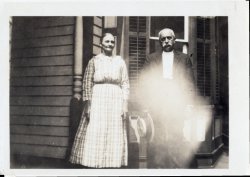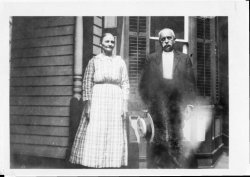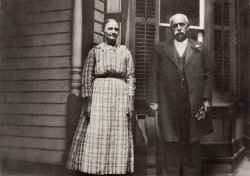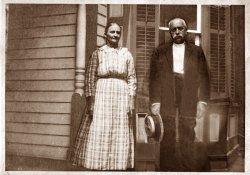Hi
@WarrenG
@JeffK 's work shows some promise.
From a flatbed scanner what you have done sounds good to me.
I am assuming that the bright glare spot is not due to the light reflection from the scanning (or you would probably see it elsewhere in the scan as well)
If the actual glossy picture does not have this glare, then instead of using a flatbed scanner using a copy stand and a camera with the lights off to the side could get rid of the glare. Yet the impression I have is the issue is embedded into the print itself.
For a given resolution scan, if you can also control the speed of the scanning, then that is an exposure control of the scanner. The depends on the scanner and the scanner software. This ties into the back scanning technique that I have used in limited cases.
The only time I have used back scanning is with silvered images which often were images on thick card stock (style at the time).
The silvering would reflect back from flatbed scanners and often with copy stand work as well (sometimes polarized light approaches help)
Yet what I did was scan the card stock treating as scanning a negative (with the light in the lid of the scanner). If you can get just some preceptible light through the card stock and set the scanning for super high exposure (very slow scanning with the same amount of light), I have been able to have the light pierce through the card and see the print detail through the silvering.
I then had to invert the image (left to right) and combine it with the original print scan. Also had to remove artifacts that you can pick up from within the card stock. In particular if there was writing on the back of the card stock that becomes visible in the back scan as well.
My wife had a heavily silvered wedding picture from the card stock where many areas looked solid black, yet was able to pull out details not seen for a hundred years including a little bumble bee that was on the bouquet of flowers.
This technique only is helpful if there is image data hiding underneath some overlying material. In my case it was surface silvering. If you have some white reflective material that was deposited on top of the image, you might be able to back scan (I was really reaching as this is not likely yet wanted all options out on the table)
Other than that, it might take looks at the 16 bit image (or just a portion that includes the glare area) for forum members to try it on the 16 bit TIFF file to see what tricks our up their sleeves. Sharing a link to a file sharing site can be done for very large files
You do have a tough project there.
John Wheeler





